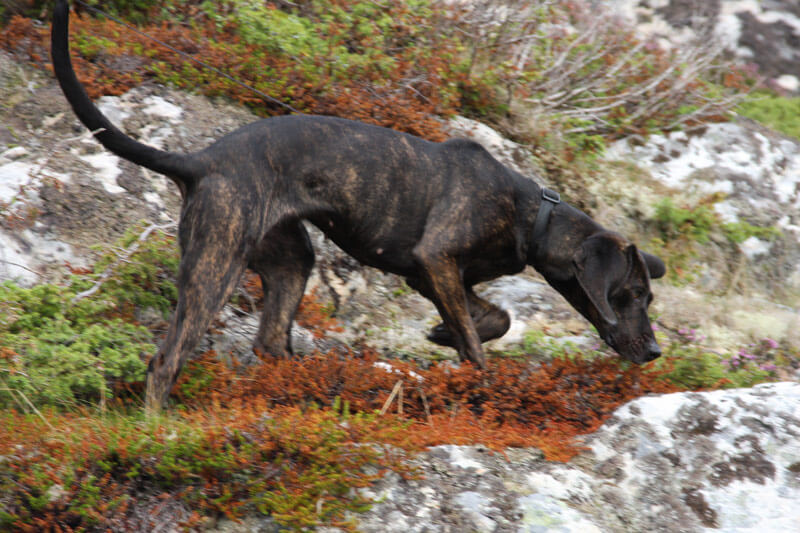Pet-lovers everywhere know that traveling with your beloved furry friends can make a long trip much more entertaining. But what if you were traveling to a new country…across an ocean…with no idea what might be waiting on the other side? Snuggling up with your pup would surely be a source of comfort in the face of such loneliness.
And that’s where the American story of the iconic Plott Hound begins – on a ship coming from Germany in the mid-1700s and ultimately ending up in the Smoky Mountains of North Carolina, where 200 years after its arrival on our shores this gorgeous breed was finally given the celebrated status of official state dog. These unique brindle-colored hounds were devoted to their owners and proved themselves invaluable as a hunter, herder, and protector, becoming an essential part of survival on the early American frontier.
From Germany to the Southern Appalachians
Today, the Plott Hound reigns supreme as a premier big-game hunting dog, but it’s a little-known fact that they have deep roots in the Smoky Mountains where they played an important role in the history of North Carolina – and in the history of one North Carolina family in particular.
Back in the 1700s, large numbers of Europeans emigrated to “the new world” in search of better lives and hope for the future, and many of them ended up in the Smokies. On one of the ships that crossed the Atlantic, there was a young passenger named Johannes George Plott. He and his brother traveled together with a group of Hanoverian hounds. Tragically, Johannes’ brother died during the journey and was buried at sea, but Johannes, in the company of his devoted hound dogs, had no choice but to continue on.
He and his pups arrived in Philadelphia in 1750, where they made their way to New Bern, NC and eventually settled in Cabarrus County. Johannes met and married his wife Margaret, and they bought a farm together, where he raised a family as well as his hunting dogs. The story goes that he kept the lineage of the dogs pure, and they were carefully bred to be courageous and strong.
The Plott Family Legacy
In 1780 Johannes’ son, Henry Plott, proudly took over the family business of raising the dogs, who eventually took on the family name as well. Several years later, Henry and his wife, Lydia, made their way to Haywood County and eventually settled in what is now known as the Plott Creek area. Threatened by wild animals like bears and wolves, the settlers in this region of the Smoky Mountains often called on their neighbor, Henry, and his pack of remarkably athletic hound dogs with their keen hunting instincts to help protect their farms and livestock.
Throughout their history, these fiercely loyal dogs have been known to not only protect livestock but also children. Many a story has been passed down of a Plott Hound being left to stand guard over the baby while the parents worked the fields.
Their renown spread across the mountains so much so that the U.S. Park Service honored the legacy of both the family and the dogs by naming three peaks in the Balsam Mountain range (a part of the Smokies) as the Plott Balsams. If you’re traveling down the Blue Ridge Parkway, you can pull over at the Plott Balsam Overlook for scenic mountain views of these stunning peaks.
Now, over 200 years later, descendants of Johannes and Henry Plott continue to breed these spectacular dogs, who hunt bear and other big game throughout the Great Smoky Mountains. In 1946, the United Kennel Club recognized them as a breed, and the popularity of these intelligent, alert, confident, and loyal hounds has grown.




